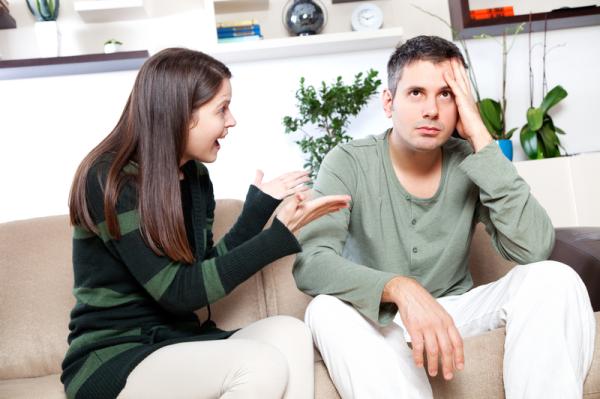Do you know that non-verbal communication can reveal messages hidden by us or others? Discover how to read the body language of the people around you.
In our conversations we think that words are the fundamental thing to understand and know what they really want. However, psychology experts have discovered that our body language and non-verbal communication It has a deeper meaning about what we really think in various situations. From a handshake to small details in our gaze, body gestures as well as other small signals from our body reveal more than we would like.
What is nonverbal communication?
Non-verbal language or non-verbal communication refers to those non-verbal cues that we use when we are in front of others. In many cases this paralinguistics forms a large part of our daily communication. In this way, this form of communication goes from our facial expressions to our slightest body movement. In fact, in many cases this paralanguage and its meaning can transmit a large amount of information.
According to research these types of non-verbal communication or body language It represents up to 65% of our way of communicating with others. Understanding non-verbal communication in this way can be the key to seeing reality in many social situations.
Types of non-verbal communication
There is much scientific research on the communication and our non-verbal language This body language or paralinguistic signals can be identified in the following according to psychology.
1. Facial expressions
Through our face we express many more emotions than we imagine. So much so that on many occasions, there are different ways of nonverbal language that are transmitted through our own face.
2. Gestures
The non-verbal gestures and their meaning They are closely linked to non-verbal communication. Most people use these body gestures unconsciously and they usually indicate more real emotions than their own words.
3. Paralinguistics
Paralinguistics refers to verbal communication that is separated from language. In this way, the body language It can also be expressed through the use of a tone of voice or its volume. The same words can have different meanings depending on these elements. This paralanguage and its definition end up emphasizing the importance of using our voice during our verbal and non-verbal communication.
4. Body language and posture
Posture is also part of our nonverbal language In fact, through the way we position ourselves in front of others, we reveal much more information than we imagine, both about our intentions and our attitude. The position of our hands, arms and legs, despite being subtle, can suggest the real feelings and attitudes behind them.

5. Proxemics
Proxemics refers to what most of us call ‘personal space’. The amount of space there is between us and others can also have meaning within the non-verbal communication
6. Haptics
Touch is also part of our language and communication. Although touch is often not taken into account as one of the elements of non-verbal communication in reality it is also a way to get closer to the authentic intentions of others.
7. Appearance
Appearance also has a lot of importance within these types of communication. In this way, the colors we use as well as our way of dressing or grooming also influence the Verbal and non-verbal communication
On many occasions the different types of non-verbal language They can consciously go unnoticed in front of others. But in reality, this type of communication through body gestures and non-verbal language usually affects our most unconscious part. In this way, non-verbal communication can point us to a bad situation or an attitude that we must correct. If you think that on many occasions you feel uncomfortable in front of others, you can always consult a professional psychologist.
Non-verbal communication: Examples
There are many elements of the non-verbal communication that we can interpret during a conversation. Here we will show you some of the main examples to discover the meaning behind these forms of communication.
Eyes
On many occasions through our eyes we have illustrative gestures of our true intentions. This is why they are sometimes referred to as the ‘windows of the soul‘since they can reveal various realities to us.
- Look : When a person looks directly into the other’s eyes while having a conversation, this indicates that they are interested and paying attention to their words. However, when eye contact is very prolonged it implies a threatening tone.
- Flicker : People blinking more rapidly may indicate a sign that they are uncomfortable in this situation. On the other hand, if it hardly blinks it may indicate that this person is intentionally trying to control the movement of their eyes.
- pupil size : Through the size of our pupils we can know if someone is interested in us or not. When someone has very dilated eyes this means that he is interested in us or that there is even a certain sexual desire.
Mouth
Another channel non-verbal communication It is our mouth. Through it, you can view non-verbal language expressions and very illustrative examples of how we use them.
- Biting the lower lip: It implies insecurity, fear or worry in the situation.
- Cover your mouth: Sometimes it is a symbol of someone polite who covers up a yawn or cough, but sometimes a person can cover a sign of disapproval or certain satisfied smiles.

Arms and legs
Through our body we create many body gestures which can be the signals of our body language with more direct and obvious messages.
- Crossed arms: It is the sign that a person is defensive and closed to a situation.
- Hands on hips: It can be an indication of a certain control towards others or it is even a sign of certain aggressiveness.
- Bring your hands together behind your back: Indicates boredom, anxiety or even anger.
- Crossed legs: It implies that a person feels closed to others or requires a certain privacy.
Position
Through our posture we create a body language which is also part of our non-verbal communication. Through it we can transmit a large amount of information about how we feel in front of people as well as determine certain characteristics about our personality.
- Sit down correctly: The person is focused and pays attention to what is happening around them.
- Sitting hunched over: It indicates that the person is bored or indifferent.
- Open posture: It involves keeping the trunk of the body open and exposed. It is the sign that a person is being kind and open to others.
- Closed posture: It usually translates to hunching forward or keeping your arms and legs crossed. It usually indicates hostility towards others.
These are some of the signs of non-verbal language or non-verbal communication most evident that we can find in our daily conversations. As we have already mentioned, this communication channel is usually unconscious for the person transmitting it, but we can learn to control it and benefit from this type of body signals.
How to improve our non-verbal communication?
Taking into account all the meaning of non-verbal language and examples described, we can improve our non-verbal communication so that others perceive us in a positive way. According to psychology we can act following these premises.
1. Appear more approachable
If you suffer from certain social anxiety or have certain problems around your social skills, you may unintentionally have some closed behaviors through your non-verbal communication In these cases you can try to control the following to improve your encounters with others.
- Avoid nervous habits
- keep your head up
- Make eye contact
- Nod when you listen
- Smile
2. Avoid negative signals
Sometimes, due to our anxiety or excess stress, we may be sending certain negative messages to others that they may express through our emotions. body gestures that we are not accessible to others. To correct it and be able to have better interactions with others, we must stop doing the following.
- Uncomfortable or fake smiles
- Crossing arms
- To be restless
- Not making eye contact
- Look down
- Get away from people
- be hunched over
3. Emphasize self-confidence
Often people who have a poor self-image can judge themselves very harshly. Because they perceive themselves in a negative way, they can also cause others to end up seeing them this way through their non-verbal gestures and its unconscious meaning. To do this, you can try to incorporate these non-verbal language tips to be able to convey more confidence in yourself.
- Do a firm handshake
- Put your head up high
- Walk using long strides
- Very straight back and posture
4. Observe your facial expressions
Beyond our body language , our face says a lot about how we are and what we really have inside us. For this reason, to try to make others perceive you in a more positive way, you can try to avoid these illustrative gestures on your face.
- Cover your mouth with your hands
- Low eyebrows
- pursed lips
- Arched eyebrows
5. Recognize the deception of others
Sometimes people are not honest with us and have certain toxic attitudes that can end up harming us. It is for this reason that through the non-verbal communication we can perceive these same deceptions. Some of the signs that indicate lack of honesty are the following.
- Playing or touching hair
- Having a rigid body or acting rigidly
- Not making eye contact
He nonverbal language It can be useful to show the hidden side of the people around us. In addition, we can also help ourselves improve our non-verbal communication to improve our relationships with others. In many cases our body and facial gestures play a crucial role in our relationships with others. A clear sign that our interior is reflected in our exterior. This is why it is crucial to take care of our mental health.










